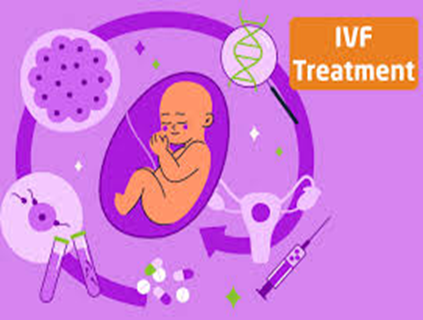(toc)
I. Definition:
It is the process of performing fertilization outside the living organisms with the help of science and its applications using a test tube. This intricate process involves the collection of eggs from the mother and sperm from the father. Then, fertilization takes place in a test tube and a fetus is formed which is later inserted into the uterus of a healthy woman who might or might not be the biological mother of the fetus inserted.
II. Process involved:
1. Retrieval of eggs
2. Retrieval of sperms
3. Artificial setup for fertilization
4. Formation of the foetus
5. Insertion of the foetus
6. Birth of the individual
1. Retrieval of eggs:
The mother of the expected fetus is induced to produce one or more eggs which are collected for the later use.
2. Retrieval of sperms:
The father of the expected fetus is induced to produce sperms which are retrieved for the later use.
3. Artificial setup for fertilization:
The collected sperms and the eggs are placed in a test tube and are allowed to fertilize with the help of the laboratory setup.
4. Formation of the fetus:
After certain days, the fetus is formed in the test tube and is kept alive with the help of laboratory setup.
5. Insertion of the fetus:
The formed fetus is inserted into the healthy woman, who may or may not be biologically linked to the inserted fetus.
6. Birth of the individual:
A few weeks later, the fetus is transformed into a healthy child and comes out of the woman's body, as a test tube baby into the world.
III. Factors affecting IVF:
● Age of the mother
● Paternal conditions
● Laboratory setup
● Quality of the foetus formed
● Health of the host
● Risk factors (if any) in previous pregnancy
● Age of the mother:
The mother who is the donor of the collected eggs should be in the age below 35. If this factor fails, then there is a greater risk with the health of the expected child. Even if the mother’s age is at 40, the risk factor is more comparatively. So, the age is usually preferred to be below 35 for a proper IVF treatment.
● Paternal conditions:
The paternal conditions include sperm motility, sperm count and its physical characteristics. These factors play a major role in the fertilization process. And if the fertilization process fails, then there is a complex risk with the life of the expected baby.
● Laboratory setup:
The environmental factors of the laboratory in which the test tube baby is about to form is checked more than once for any abnormal conditions. For example, the pH and the temperature is maintained at a suitable rate for the fermentation to occur.
● Quality of the fetus formed:
The morphology of the formed fetus is thoroughly monitored for any abnormalities and its quality is checked regularly, before its inception.
● Health of the host:
The physical and the mental conditions of the host within whom the fetus is inserted play an immense role in this test tube baby formation. For the baby to be healthy and active, both the physical and the mental conditions of the host should be optimal.
● Risk factors (if any) in previous pregnancy:
The risk factors associated with the host as well as the donor individuals are analyzed properly before carrying out the IVF procedures. If any risk factors are found after inception, it may lead to the abortion of an unborn child.
IV. Pioneers in IVF Treatment:
● Dr. Robbert Edwards and Dr. Patrick Steptoe
● Dr. Subhash Mukopadhyay
● Dr. T. C. Ananda Kumar
● Dr. Robbert Edwards and Dr. Patrick Steptoe
These scientists were from England and they developed the first test tube baby, named Louise Brown in 1978. They worked hard for more than fifteen years to achieve this. Dr. Robert Edwards was awarded the Nobel prize in 2010 for his contribution towards the world’s first test tube baby.
● Dr. Subhash Mukopadhyay:
He was from West Bengal in India. This scientist developed the first Indian test tube baby soon after 67 days, after the birth of the world’s first ever test tube baby. The child was a girl named Durga alias Kanupriya Agarwal. She was also born in 1978. Despite Dr. Subhash’s hard work and intelligence, his work was not recognized in India. He was humiliated for his immoral work towards science. But later, his work was given importance in the foreign countries and they started following his method to form an IVF or a test tube baby. Due to the difficulties he faced in his life even after an immense discovery in the modern world of science, he committed suicide in 1981. There is still hope that he might be awarded by the Indian representatives, posthumously
● Dr. T. C. Ananda Kumar:
He was from Tamil Nādu in India and he developed the second Indian test tube baby. This scientist was the first person in India to recognize the complex work done by Dr. Subhash Mukopadhyay towards IVF treatment and also he published an article in the name of Dr. Mukopadhyay.
V. Advancements in IVF
IVF treatment has evolved through certain stages in recent times, namely:
- Improvement in the selection of embryos
- Screening for any genetic disorder
- Other remarkable advancements include:
- Endometrial Receptivity Analysis
- Laser-Assisted Hatching
- In-Vitro Maturation
- Intracytoplasmic Sperm Injection
- Vitrification






